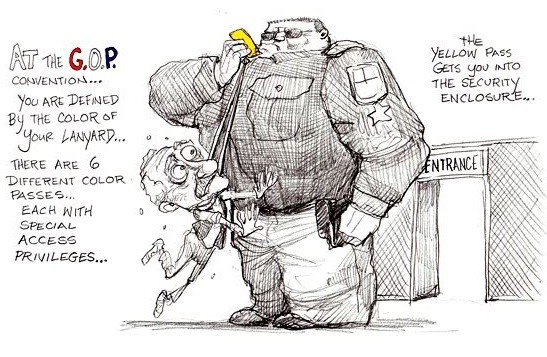Socialized risk not confined to subprime mess; healthcare impacted (WTN News)
Post on: 23 Май, 2015 No Comment

Ben Stein, the noted New York Times columnist cum economist, has written an interesting piece titled “Wall Street, Run Amok.” At the time of this writing, it had become the “most popular” among business articles being e-mailed. In this Web 2.0 era, most popular either means there is something valuable and substantive, or enormously entertaining or crazy. In the past, Stein has satisfied both criteria, so I’ll let you be the judge.
Actually, Stein is less a promulgator of ideas than a transmitter. He quotes a fascinating speech by the hedge fund manager David Einhorn, who according to Stein has put his finger on the underlying cause of the subprime mess. Many of us are aware of the reasons but the quote below (paraphrased by Stein) seems to encapsulate it nicely, which is probably why the speech was so compelling:
“The owners, employees and creditors of these institutions are rewarded when they succeed, but it is all of us, the taxpayers, who are left on the hook if they fail. This is called private profits and socialized risk. Heads, I win. Tails you lose. It is a reverse-Robin Hood system.”
This is also a key component behind the major problem of the uninsured — namely the 47 million Americans estimated to not have health insurance. Prior to the subprime mess, the main domestic problem crowding the electoral airwaves was that of healthcare and specifically that of the uninsured. The subprime crisis, morphing into a credit crisis and then morphing into an economic slowdown, has supplanted that.
Granted, that was bound to be the case anyway. Healthcare is a tough problem and the credit crisis, however complex it may be, appears to have more obvious solutions. Lower an interest rate here, tweak another one there, sprinkle a little sugar and hopefully that should do the trick. I don’t mean this facetiously, of course, as the rather unprecedented efforts of the Fed may have, if some of the tea leaves are correct, set the stage for recovery.
Advertisement
This MedTech Futures column has occasionally written about healthcare reform and this concept of “socialized risk” — not to be confused with socialized medicine — is also central to some of MedTech themes.
Electronic link
You might be asking why electronic ink is being expended on healthcare reform in a MedTech Future’s column. Two reasons: one, the ideas presented here are sufficiently different yet not crazy to hopefully contribute meaningfully to the debate; and two, nearly every time I discuss medical technology and the prospects thereof, often the “conclusions” strongly depend on projections on what our future healthcare system will look like.
I am often asked questions like: What’s your view on medical tourism? What’s your view on the future of drug-eluting stents? Where is orthopedic surgery headed? I provide my most reasoned answers, but in many cases the largest unknown (the 800 pound gorilla as the clich goes) is that of healthcare reform. It will have a big impact, and for something that has such an impact it makes little sense to have the gorilla walk all over you.
So, back to socialized risk. In the February article. I pointed out how, despite superficial appearances, there’s a strange logic to our healthcare system that addresses different stages of “socialized risk” — namely the risk of getting ill. A brief quote from that article makes the point:
As a consequence of the wage and price controls instituted during World War II, employer-sponsored health care insurance has become — at least until recently — the avenue by which the employed have obtained healthcare coverage. With the 1960s and the Great Society programs, Medicare and Medicaid were enacted to cover the well-recognized gap that developed among the non-working elderly and poor (respectively).
More recently during the 1990s, the State Children’s Health Insurance Program (SCHIP) was brought on board to cover the last apparent gap (namely that of children).
In short, our system is actually quite logical and simple. It consists of two parts: businesses pay for the health insurance for the employed public while government pays for everyone else.
The problem arises that certain groups — businesses and individuals — choose to “opt-out” of the system. Their risk becomes socialized, so the above statement needs to be rephrased to:
It consists of two parts: some businesses pay for the health insurance for the employed public while government pays for everyone else.
Some indeed
The operative term is “some,” which encapsulates a complex situation in which younger individuals choose not to get health insurance (thus socializing their risk), and more broadly and significantly certain companies (such as the well-publicized Wall-Mart) that either do not provide health insurance or significantly underinsure their employees. The bottom line is that risk has become socialized. Eventually, someone must pay.
In the wake of the recent tragic CTA accident in Chicago, I was struck by one statement taken here from the Chicago Tribune article .

“[Truck driver Don] Wells refused the doctor’s advice and asked to be released, in part because he didn’t have health insurance, Howard said. He was handcuffed and escorted by police to a waiting police wagon.”
Whether Wells is at fault or not is up to others to determine. It is a fact that his healthcare status has now entered the realm of social cost. What if Wells had a small subdural hematoma which over the coming days would expand? What if he had a heart problem that had him take aspirin which, in the absence of medical advice, would accelerate the projection of this small bleed?
All conjecture, of course, but it should be noted that he did not leave the hospital treated. He left, as the formal phrase is called, AMA or “Against Medical Advice.” So, in a few days, he could grow increasingly somnolent and then end up in an emergency room. Tens of thousands of dollars later, which taxpayers will pay, and perhaps after a couple of brain surgeries, he may not be able to appear in court or inform authorities of what happened during that tragic rush hour.
Of course, this is purely hypothetical. But with nearly 47 million uninsured out there, the hypothetical can become very real. Statistics do not hide personal tragedies — just ask anyone who’s being forced into foreclosure. March is over, but beware the Ides of socialized risk. It is not confined to the subprime mortgage sector.
Previous articles by Ogan Gurel
Dr. Ogan Gurel is a Managing Director in the Healthcare consulting practice at XRoads Solutions Group. He is also Medical Producer at the internet TV network — InTimeTV and hosts two talk shows — “Insights in Medicine” whose audience is primarily composed of physicians and the show “Eye on Harvard.”
He is also an adjunct associate professor of bioengineering at the University of Illinois at Chicago. Dr. Gurel has a Bachelor’s degree in Biochemical Sciences from Harvard, earned his M.D. degree from the Columbia University College of Physicians & Surgeons and completed surgical internship at the Massachusetts General Hospital. As a health care technology expert and futurist, Gurel has been a frequent conference speaker worldwide. His particular focus has been on convergent medical technologies including medical nanotechnology. In addition to the
This article previously appeared in MidwestBusiness.com. and was reprinted with its permission.
The opinions expressed herein or statements made in the above column are solely those of the author, and do not necessarily reflect the views of Wisconsin Technology Network, LLC.
WTN accepts no legal liability or responsibility for any claims made or opinions expressed herein.Wisconsin Technology Network. his commentaries have been published in the Wall Street Journal and other print and online venues. His regular blog on life sciences, business and investment can be found here.














